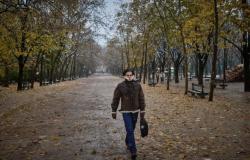
A cloud of smoke from fires in Canada will hover over France this week. Here are the recommendations in the event of exposure to these ashes, the French territories concerned and the scientific explanations for this phenomenon.
You will no doubt find sunrises and sunsets very hazy this week. A thick fog of ash will soon affect Europe from Tuesday, June 27, 2023. These particles come from the hundreds of forest fires that have been raging in Canada since May. France will be crossed by this ash cloud until Thursday according to the weather forecasts of the reference institutes.
A few weeks ago, the northeastern United States had spent several days in a surreal atmosphere because of this phenomenon. For the first time, France will experience this phenomenon. The distance between Canada and Europe will probably make it possible to avoid the high concentrations identified in North America. This interactive map of Copernicus (a European Union program on the state of the Earth) allows you to follow in real time the course of this ash cloud on the continent and therefore on France:
Air quality affected in France
A strong flow allowed these fumes to cross the North Atlantic to the Old Continent. Fortunately, meteorologists predict that the majority of the smoke will remain at high altitudes, but air quality could still be affected locally by the passage of this ash. This Copernicus map estimates the level of carbon monoxide present in these ashes: the concentrations of this toxic gas should be close to the limit of the critical threshold according to European criteria.
In this https://twitter.com/SergeZaka/status/1673083636361437185?s=20 by climatologist Serge Zaka, the ash cloud is visible from space. According to Charlotte Lepitre, a manager of Atmo France interviewed by TF1info, the organization that federates approved air quality monitoring associations, it is difficult to predict which parts of French territory will be affected by this phenomenon: “The speed winds and precipitation in the North Atlantic area can change the situation on the quantity of particles that will reach us. Thanks to the stations, we have real-time data and we can inform the population in the event of an increase in concentrations detected in the air”.
The Copernicus simulation, however, shows that the north of the country is the most likely to be overflown first by these Canadian ashes. According to this visualization, Thursday should be the peak on French soil with more than three-quarters of the country affected. But the winds could modify the trajectory and the altitude of this cloud of smoke.
Here are the recommendations to follow, according to the ARS of Pays de la Loire, for “populations residing in areas farther from the fires, but where dense smoke from forest fires nevertheless reaches”:
- Limit travel and time spent outdoors
- Give up outdoor activities involving physical exertion
- Keep the doors and windows of the dwellings closed; ventilate again only after the effective dissipation of the fumes
- Maintain good indoor air quality in the home by not lighting any source of combustion (cigarette, candle, incense, etc.)
- Pay attention to people at risk, because the irritation of their respiratory tract by the fumes can aggravate their pathology.
- In the event of simple discomfort felt (perception of burning odor), it is not useful to solicit, neither your attending physician, nor to call the emergency number of the SAMU.





